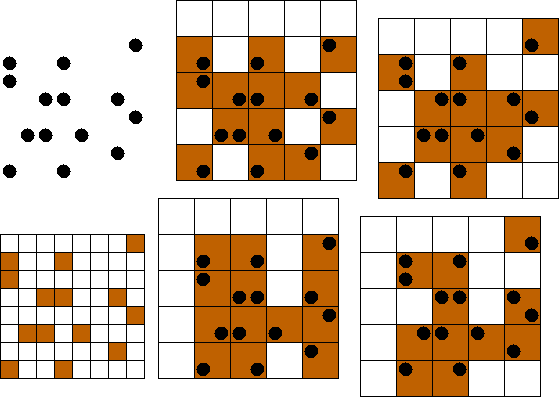Instead of simply taking multiple scales of data (![]() ),
multiple different grid locations can be used for each scale, as there
is freedom in how they are chosen. For the case of a grid twice as coarse
as the original fine grid, there would be 4 possible grid locations for a
2D case, shown in Figure 1. This number is inversely
proportional to the size of the bins, and increases exponentially with dimension. However,
in the case of irregular traces, there is no point in shifting the grid along
the time axis, as the number of equations would be unaffected.
),
multiple different grid locations can be used for each scale, as there
is freedom in how they are chosen. For the case of a grid twice as coarse
as the original fine grid, there would be 4 possible grid locations for a
2D case, shown in Figure 1. This number is inversely
proportional to the size of the bins, and increases exponentially with dimension. However,
in the case of irregular traces, there is no point in shifting the grid along
the time axis, as the number of equations would be unaffected.
 |
In the case of a non-stationary PEF, extra bookkeeping is required,
as the different grid locations will correspond to different regions of
the non-stationary PEF. This does make using these extra versions of the
data more expensive, as the weight ![]() and sub-sampler
and sub-sampler ![]() are
not the same at one scale and need to be recomputed.
are
not the same at one scale and need to be recomputed.